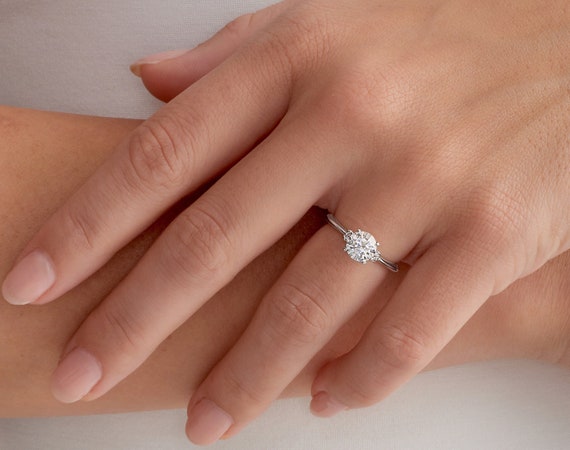Lab-grown diamonds have revolutionized the jewelry industry, offering a sustainable and ethical alternative to natural diamonds. With advancements in technology and growing consumer awareness, lab-grown diamonds are becoming a preferred choice for conscientious buyers worldwide.
Introduction
lab grown diamonds are forever, also known as synthetic diamonds or cultured diamonds, are man-made gems produced in controlled laboratory environments. Unlike natural diamonds, which form deep within the Earth’s mantle over millions of years, lab-grown diamonds are created using advanced technological processes that replicate the natural diamond-growing environment.
Advantages of Lab-Grown Diamonds
Environmentally Friendly
One of the primary advantages of lab-grown diamonds is their minimal environmental impact. Unlike traditional diamond mining, which involves significant land disturbance and habitat alteration, lab-grown diamonds are produced with fewer carbon emissions and less energy consumption.
Ethical Considerations
Ethical concerns surrounding the diamond industry, such as human rights violations and unethical mining practices, are addressed with lab-grown diamonds. These gems are produced under strict labor regulations and ethical standards, ensuring fair treatment of workers and minimal social impact.
Cost-Effectiveness
In addition to being environmentally friendly and ethically sourced, lab-grown diamonds typically cost 20-40% less than natural diamonds of comparable quality. This affordability makes them an attractive option for budget-conscious consumers without compromising on beauty or durability.
Quality and Properties
Chemical Composition
Lab-grown diamonds have the same chemical composition as natural diamonds: pure carbon arranged in a crystal lattice structure. This identical composition ensures that lab-grown diamonds exhibit the same brilliance, hardness (measured the Mohs scale), and overall durability as their natural counterparts.
Physical Characteristics
Visually, lab-grown diamonds are indistinguishable from natural diamonds to the naked eye. They possess the same optical properties, including fire, brilliance, and sparkle, making them a desirable choice for jewelry settings.
How Lab-Grown Diamonds Are Made
High Pressure High Temperature (HPHT) Method
The HPHT method involves recreating the high-pressure, high-temperature conditions found in the Earth’s mantle. A small diamond seed is placed in a carbon-rich environment and exposed to extreme pressure and heat, allowing carbon atoms to crystallize around the seed and form a larger diamond.
Chemical Vapor Deposition (CVD) Method
In the CVD method, a diamond seed is placed in a vacuum chamber filled with carbon-rich gases. These gases are ionized into plasma using microwave energy, causing carbon atoms to accumulate on the seed and gradually form a diamond crystal layer layer.
Comparison with Natural Diamonds
Differences in Origin and Formation
While natural diamonds form through geological processes deep within the Earth, lab made diamonds are created under controlled laboratory conditions. This distinction in origin does not affect the physical or chemical properties of the diamonds themselves but sets them apart in terms of sourcing.
Visual and Chemical Distinctions
Gemologists can differentiate between natural and lab-grown diamonds using specialized equipment that detects trace elements and growth patterns unique to each type. However, to the untrained eye, lab-grown diamonds are virtually identical to natural diamonds in appearance and quality.
Popularity and Market Trends
Growth in Consumer Demand
Consumer awareness of lab-grown diamonds has increased significantly in recent years, driven their ethical and environmental benefits. Millennials and Gen Z consumers, in particular, value sustainability and transparency in their purchasing decisions, contributing to the rise in demand for lab-grown diamonds.
Industry Acceptance and Trends
The jewelry industry has embraced lab-grown diamonds as a viable alternative to natural diamonds, with many leading brands offering them alongside traditional options. This acceptance reflects shifting consumer preferences and the industry’s commitment to sustainability.
Applications of Lab-Grown Diamonds
Jewelry
Lab-grown diamonds are used in a wide range of jewelry pieces, including engagement rings, earrings, necklaces, and bracelets. Their availability in various sizes, shapes, and colors makes them versatile for different designs and preferences.
Industrial Uses
Beyond jewelry, lab-grown diamonds have industrial applications in technology, medicine, and manufacturing. Their hardness and thermal conductivity make them ideal for cutting tools, heat sinks, and semiconductor applications.
Caring for Lab-Grown Diamonds
Proper care and maintenance ensure the longevity and brilliance of lab-grown diamonds. Regular cleaning with a mild soap and soft brush, along with professional inspections, help preserve their sparkle and shine over time.
Misconceptions and Myths
Addressing Common Misconceptions
One common misconception is that lab-grown diamonds are “fake” or of inferior quality compared to natural diamonds. In reality, lab-grown diamonds are real diamonds with the same chemical and physical properties as natural diamonds.
Debunking Myths
Another myth is that lab-grown diamonds lack investment value. While natural diamonds have a long-standing market, lab-grown diamonds are gaining recognition among investors for their sustainable sourcing and growing consumer demand.
Future of Lab-Grown Diamonds
Technological Advancements
Ongoing research and technological advancements continue to improve the efficiency and scalability of lab-grown diamond production. Innovations in diamond-growing techniques promise to further reduce costs and expand market availability.
Potential Market Impact
As consumer preferences shift towards sustainability and ethical sourcing, the market for lab-grown diamonds is poised for significant growth. Industry projections indicate a steady increase in demand as awareness spreads and production capabilities expand.
Conclusion
Lab-grown diamonds offer a sustainable, ethical, and cost-effective alternative to natural diamonds without compromising on quality or beauty. As technological advancements propel their market acceptance, lab-grown diamonds are redefining the future of fine jewelry.




